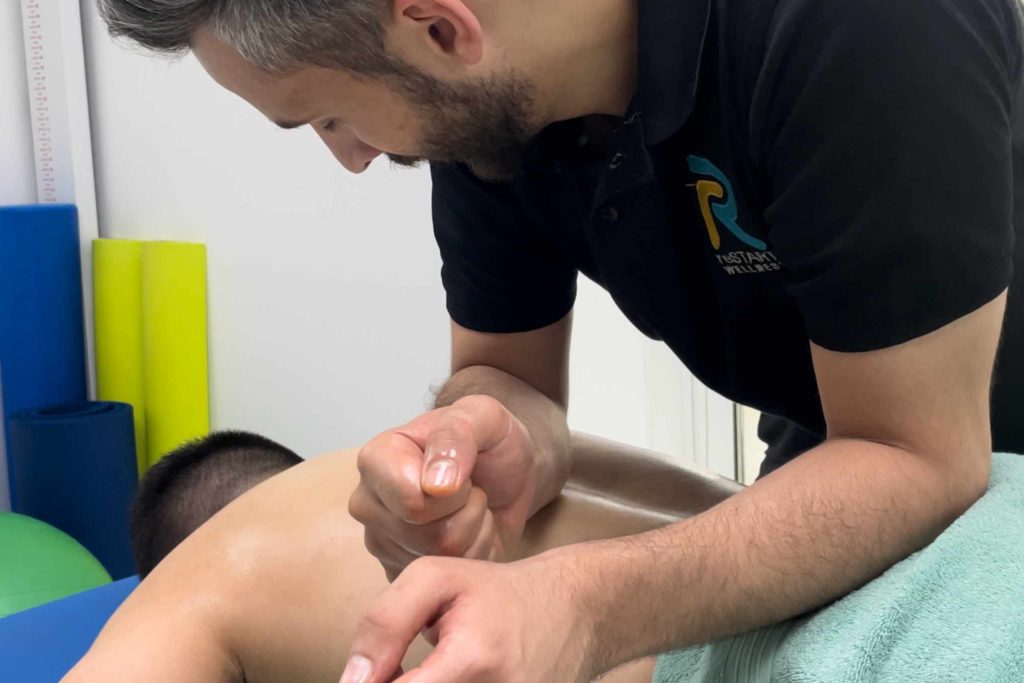
Athletes constantly seek ways to enhance performance and expedite recovery. Sports massage stands out as a powerful technique for both, offering unique benefits that other methods may not provide. This blog explores the nuances of pre-event and post-event sports massage, highlighting their benefits and differences.
Pre-Event Sports Massage
Purpose:
The goal of pre-event sports massage is to prepare the athlete’s body and mind for upcoming physical activity. It focuses on warming up the muscles, increasing circulation, and enhancing flexibility, all contributing to peak performance.
Techniques:
Effleurage: Light, gliding strokes to increase blood flow and warmth.
Petrissage: Kneading techniques to loosen muscles and improve circulation.
Tapotement: Rhythmic tapping to stimulate nerves and invigorate muscles.
Benefits:
Increased Blood Flow: Enhances oxygen delivery to muscles, boosting energy levels.
Improved Flexibility: Prepares muscles and joints for a full range of motion.
Reduced Muscle Tension: Eases stiffness, reducing the risk of strains and sprains.
Enhanced Mental Focus: Helps athletes enter a focused and calm state of mind, crucial for peak performance.
Timing:
Ideally, a pre-event massage should be performed 15-45 minutes before the event. This timing ensures the muscles are warmed up without leaving the athlete feeling too relaxed or sluggish.
Post-Event Sports Massage
Purpose:
Post-event sports massage aims to aid recovery, reduce muscle soreness, and prevent injuries. It helps the body cool down, flush out metabolic waste, and restore normal muscle function.
Techniques:
Effleurage: Light strokes to promote relaxation and lymphatic drainage.
Compression: Gentle, sustained pressure to reduce muscle tightness.
Passive Stretching: Gentle stretching to relieve muscle tension and improve flexibility.
Benefits:
Reduced Muscle Soreness: Helps alleviate delayed onset muscle soreness (DOMS) by reducing lactic acid buildup.
Enhanced Recovery: Speeds up the removal of metabolic waste, promoting faster recovery.
Injury Prevention: Eases muscle tightness and imbalances that could lead to injuries.
Relaxation: Promotes overall relaxation and mental recovery, essential after intense physical exertion.
Timing:
Post-event massage is most effective when performed within 1-2 hours after the event. This window allows for optimal recovery while the body is still warm and receptive to the benefits of massage.
Integrating Sports Massage into Your Routine
Professional Sessions:
Regular sessions with a qualified sports massage therapist can provide tailored care, addressing specific needs and helping to prevent injuries.
Self-Massage Techniques:
When professional help is not available, athletes can use foam rollers, massage balls, and stretching routines to mimic some of the benefits of sports massage.
Conclusion
Integrating both pre-event and post-event sports massage into your fitness regimen can significantly improve performance, accelerate recovery, and minimize the likelihood of injuries. The strategic application of sports massage can assist both professional athletes and weekend warriors in reaching their objectives and maintaining peak performance levels.
References:
- Callaghan, M. J. (1993). The role of massage in the management of the athlete: a review. British Journal of Sports Medicine, 27(1), 28-33.
- Weerapong, P., Hume, P. A., & Kolt, G. S. (2005). The mechanisms of massage and effects on performance, muscle recovery and injury prevention. Sports Medicine, 35(3), 235-256.
- Smith, L. L., Keating, M. N., Holbert, D., Spratt, D. J., McCammon, M. R., Smith, S. S., & Israel, R. G. (1994). The effects of athletic massage on delayed onset muscle soreness, creatine kinase, and neutrophil count: a preliminary report. Journal of Orthopaedic & Sports Physical Therapy, 19(2), 93-99.
- Moraska, A. (2005). Sports massage: a comprehensive review. Journal of Sports Medicine and Physical Fitness, 45(3), 370.
- Wiktorsson-Moller, M., Oberg, B., Ekstrand, J., & Gillquist, J. (1983). Effects of warming up, massage, and stretching on range of motion and muscle strength in the lower extremity. The American Journal of Sports Medicine, 11(4), 249-252.
- Brummitt, J. (2008). The role of massage in sports performance and rehabilitation: current evidence and future direction. North American Journal of Sports Physical Therapy, 3(1), 7-21.